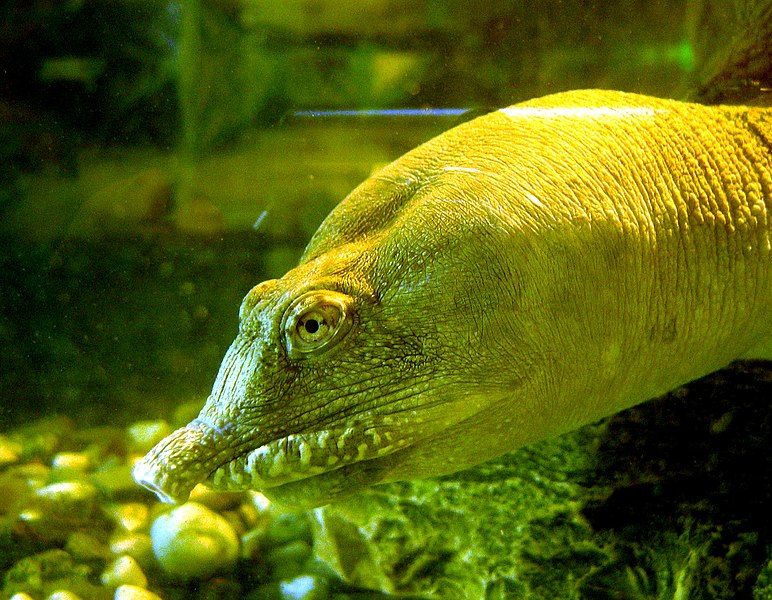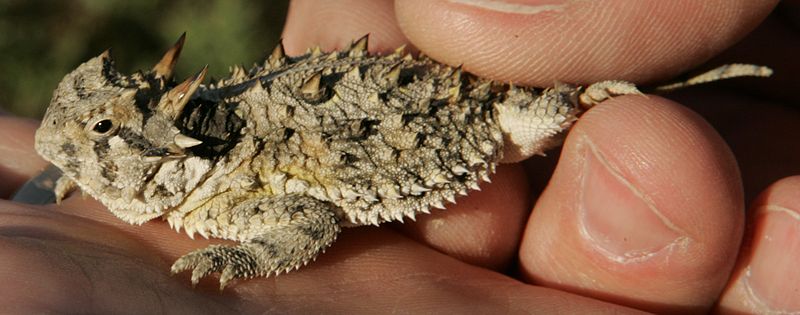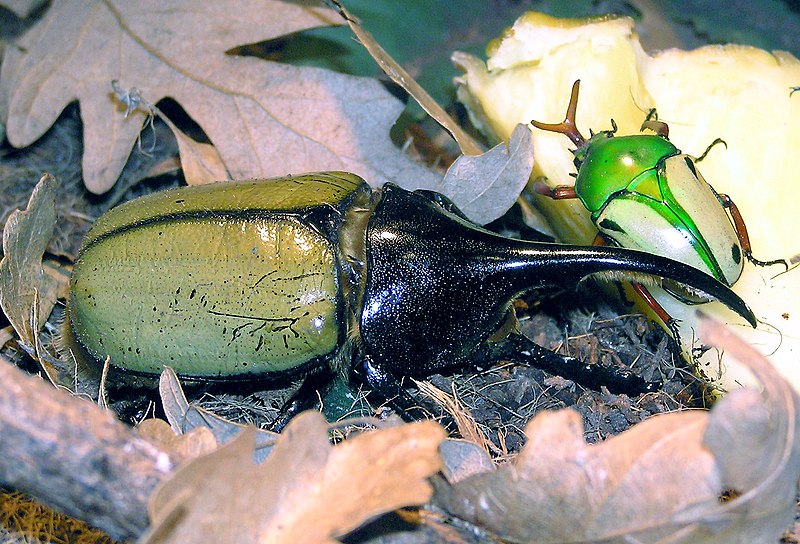 Turtles and other reptiles are full of surprises when it comes to reproduction. In the past few decades we’ve learned that incubation temperature, not genetics, determines the sex of many species, that some have dispensed entirely with males (i.e. the Brahminy Blind Snake) and that the massive Komodo Dragon is capable of reproducing without fertilization. Recently (May, 2011), biologists have determined that turtle embryos move within the egg and actively seek heat. This finding may cause us to re-examine conservation techniques, and raises an array of important questions – i.e., can turtle embryos actually determine what sex they will be? Read More »
Turtles and other reptiles are full of surprises when it comes to reproduction. In the past few decades we’ve learned that incubation temperature, not genetics, determines the sex of many species, that some have dispensed entirely with males (i.e. the Brahminy Blind Snake) and that the massive Komodo Dragon is capable of reproducing without fertilization. Recently (May, 2011), biologists have determined that turtle embryos move within the egg and actively seek heat. This finding may cause us to re-examine conservation techniques, and raises an array of important questions – i.e., can turtle embryos actually determine what sex they will be? Read More »
Category Archives: Conservation
Feed SubscriptionAmphibian News – Rare Frogs Breed in Captivity, Lost Species Found
 Frogs and frog enthusiasts have much to celebrate these days. The endangered Lake Titicaca Frog, Telmatobius culeus, has reproduced in captivity, and 6 Haitian frogs, lost to science for decades, have been found.
Frogs and frog enthusiasts have much to celebrate these days. The endangered Lake Titicaca Frog, Telmatobius culeus, has reproduced in captivity, and 6 Haitian frogs, lost to science for decades, have been found.
Lake Titicaca’s Aquatic Giant
The huge, skin-breathing, cold-adapted Lake Titicaca Frog ranks as one of the world’s strangest amphibians. Known only from this lake, which straddles the Peru-Bolivia border at 12,500 feet above sea level, the unique creature is threatened by the food trade and pollution.
I had the good fortune to work with what was, at the time, the only Lake Titicaca Frogs in captivity. Despite nearly 2 decades of trials, I and my co-workers failed to raise the few tadpoles that were produced (please see article below). However, Peru’s Huachipa Zoo, in association with the Denver Zoo, has announced that 5 apparently healthy tadpoles are now being reared. A museum in Bolivia has been successful in breeding a close relative, the equally-rare Water Frog, Telmatobius hintoni. Read More »
Do Your Frogs or Toads Have Trouble Catching Insects?
 I’ve recently observed several frogs and toads to develop difficulties in feeding (American Bullfrogs, Gray Treefrogs, Southern Leopard and Green Frogs; several readers have written to me concerning difficulties with American Toads). It starts with what looks like “bad aim” and progresses to the point where the frogs cannot catch insects at all and must be force-fed. I’ve looked into the problem and found that a Vitamin A deficiency, leading to Short Tongue Syndrome, may be involved (please see this article by Dr. Kevin Wright of the Arizona Exotic Animal Hospital for details). I’d like to request that readers send me their own observations, so that we can learn more about this serious amphibian health problem. Read More »
I’ve recently observed several frogs and toads to develop difficulties in feeding (American Bullfrogs, Gray Treefrogs, Southern Leopard and Green Frogs; several readers have written to me concerning difficulties with American Toads). It starts with what looks like “bad aim” and progresses to the point where the frogs cannot catch insects at all and must be force-fed. I’ve looked into the problem and found that a Vitamin A deficiency, leading to Short Tongue Syndrome, may be involved (please see this article by Dr. Kevin Wright of the Arizona Exotic Animal Hospital for details). I’d like to request that readers send me their own observations, so that we can learn more about this serious amphibian health problem. Read More »
First North American Captive Breeding of the Giant Horned Lizard
 Horned Lizards of various species, usually sold as “Horned Toads”, were US pet trade staples in the 1950’s and 60’s. Looking much like minute dinosaurs, they needed more heat and UVB than most could provide, along with an ant-dominated diet, and fared poorly. As a boy, I was able to keep them going in the summer, thanks to natural sunlight and plentiful ants, but they declined in winter (I discovered they did not like the “house ants” I collected in local stores!). As I moved into zoo work, the key to keeping most species remained elusive. So I was very happy to hear that the Los Angeles Zoo had recently (January, 2011) succeeded in breeding the largest species, the Giant Horned Lizard, Phrynosoma asio. Read More »
Horned Lizards of various species, usually sold as “Horned Toads”, were US pet trade staples in the 1950’s and 60’s. Looking much like minute dinosaurs, they needed more heat and UVB than most could provide, along with an ant-dominated diet, and fared poorly. As a boy, I was able to keep them going in the summer, thanks to natural sunlight and plentiful ants, but they declined in winter (I discovered they did not like the “house ants” I collected in local stores!). As I moved into zoo work, the key to keeping most species remained elusive. So I was very happy to hear that the Los Angeles Zoo had recently (January, 2011) succeeded in breeding the largest species, the Giant Horned Lizard, Phrynosoma asio. Read More »
Stag Beetle Conservation, with Notes on Keeping Large Beetles
 Beetle-keeping is a small but expanding hobby here in the USA, but is amazingly popular in Japan, where beetle larvae are even sold in vending machines (I experienced this first-hand, and can say they survive the ordeal quite well!). Beetles are classified in the order Coleoptera, which exceeds all other animal orders in species diversity, and they play a vital role most ecosystems. Beetle conservation, however, is in its infancy, so I was very pleased to learn of new efforts on behalf of the UK’s largest species, the European Stag Beetle, Lucanus servus.
Beetle-keeping is a small but expanding hobby here in the USA, but is amazingly popular in Japan, where beetle larvae are even sold in vending machines (I experienced this first-hand, and can say they survive the ordeal quite well!). Beetles are classified in the order Coleoptera, which exceeds all other animal orders in species diversity, and they play a vital role most ecosystems. Beetle conservation, however, is in its infancy, so I was very pleased to learn of new efforts on behalf of the UK’s largest species, the European Stag Beetle, Lucanus servus.
Elusive Quarry
The European Stag Beetle (please see photo) is likely in sharp decline, but no one knows why. They are very hard to study…adults do not feed and so cannot be lured to traps, and digging for buried larvae often kills them and destroys their habitat. Read More »
 That Reptile Blog – Reptile, Amphibian and Exotic Pet Care and Information
That Reptile Blog – Reptile, Amphibian and Exotic Pet Care and Information
